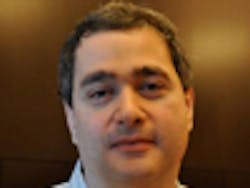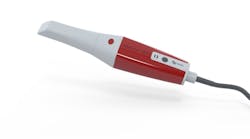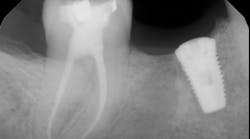Top 5 questions you should ask a dental lab before you send them a case
By Steven Pigliacelli, CDT
Communication is key to your relationship with a lab. Here is a list of questions to ask a prospective new laboratory prior to starting a business relationship. Narrowing the list to five questions was difficult, but as you will see, there are many additional questions within each category. While some of these questions may seem harsh, most labs will appreciate your honesty and direct approach toward forging a new relationship by addressing these issues up front.
1. "Do you use ADA-approved materials?"
This is important in that you want to make sure all materials the lab uses are manufactured by reputable companies. For example, some labs “brown bag” metal shot from a guy on the corner who makes his own copy of another manufacturer’s alloy for a fraction of the cost. When you ask for a high-gold crown and the lab gives you an incredibly low price, you must question how this is possible. Quite often, nonprecious or other substitutes are used and passed off as the alloy of request to keep the costs down and increase profits. To ensure you are getting quality alloy, request the IdentAlloy® sticker from the manufacturer to be applied to all the invoices to certify what was used on the case.
In the case of brand name crowns, such as the many different zirconia crowns on the market, you want to know if the lab is an authorized lab for that product and if they are using genuine material for that product. For example, is that a genuine Procera crown or Lava crown, or is it an imitation zirconia crown that costs a fraction of the price but is being passed off as the real thing? Always remember if the lab is offering a product at a much lower price than every other lab for the same thing, chances are it isn’t the same thing. The number of authorized Captek™ labs in the country could not produce the number of crowns being sold as “Captek.” Many labs will just cast yellow gold copings, bake porcelain on it, and call it Captek. You have the ability to call any company and question whether that lab is an authorized user of that product.
2. "Do you use genuine manufacturer parts and hardware for implant restorations?"
As with alloy, it is crucial that genuine implant manufacturer parts are used on your restorations, unless you request otherwise. There are many copycat implant manufacturers on the market today. Some make decent parts, while others are noticeably inferior. If you choose to use imitation parts, that is your prerogative. But if you ask for a genuine Nobel Biocare™ bridge and the lab uses a knockoff, that is a serious offense. The manufacturer’s warranty is voided, and you will be responsible for full charge on the remake. If the implant failed, the surgeon or periodontist will be responsible for the new implant. It is not uncommon for labs to use plastic imitation components and pass them off as genuine. Just as you might question the ethics and reliability of a competing dentist who charges one-third the fee of every other dentist in the area, you must question how a lab can offer any implant restoration at such a low cost. If you want to save money on parts, the way to do that legitimately is to get your own account, buy your own parts, and supply them to the lab to use. You may even be able to get a discount on the parts.
3. "How do you perform quality control checks on your work?"
How does a lab make sure you are getting a good piece of work? If the turnaround time is very fast, you must consider when that lab owner or technician will be able to check the work. For example, consider what it takes to make a single porcelain-fused-to-metal (PFM) crown: The models need to be poured, "Pindexed" (or equal system), and counter models poured and mounted. The dies must be trimmed, die spacer applied, then waxed to correct contour. A sprue must be added, then placed on a base. Since it makes more sense to group wax-ups in a casting ring, a technician will wax more than one case and invest them all for overnight burnout. Is there someone who is in charge of quality control on these wax-ups to make sure that the wax-up is correct? The ring will be cast, divested, and finished. Is there someone who makes sure that the coping is made correctly to the exact specifications and desired alloy? The coping is cut back and opaqued to the desired shade. Finally the ceramist will apply the porcelain. A final quality control day is required. If something needs to be adjusted, fixed, or remade, an extra day is more than helpful. An average lab will take at least seven to eight days to do this entire work, not including the pickup. If a lab is taking three to five days for a single PFM, when does the quality control happen? How is the work being performed? Does the lab have full-time employees, or subcontractors who come in after hours and knock out a few units? Is the work performed at the lab? Find out how many technicians work at the lab, and ask if they all work full time. A consistent team of technicians supplies a consistent quality of work. If the lab allows after-hour technicians to come in after their workday at another lab to do a few units, consistency and quality will suffer.
4. "Do you send your work offshore?"
Many labs send their work to China, Korea, India, the Philippines, Mexico, Costa Rica, or any other country with low labor and production costs. They do this without telling the dentist. These countries do not have the FDA or ADA compliance laws that we do to ensure that approved materials are used. Lead-laced alloy and porcelain on PFM crowns have already been reported in this country the last few years. The patient’s as well as the dentist’s health — who inserts, grinds, and adjusts the crown — are at risk with these contaminated crowns. The labs can get crowns as low as $29 from overseas labs and then resell them at a lower rate than other American labs, but still at a great profit. Some labs actually advertise this fact and offer low prices to the dentist. Ask yourself how can a crown that contains palladium, gold, or silver alloy, ADA-approved materials, porcelain, and that is made with quality craftsmanship cost less than $150? Many labs do not tell you they are sending the work overseas; they just pass it off as their own.
5. "May I inspect your lab?"
Ask, and then do it! Meet the lab owner and the quality control guy. Meet the office staff. Take a tour of the lab. Is it clean? If this is a quality-oriented lab, then the facility should follow suit. Why would you accept a dirty, pumice-covered, disheveled mess of a dental lab instead of a professional-looking establishment? You should examine the work pans and look at the work coming in and going out. Are the pans covered in plaster and the models and articulators sloppy and dirty? Do the impressions look like the kind you would send? Are the work desks neat? Do the technicians take care of the equipment and respect their tools? Ask if there is an inventory closet or area where they keep their implant hardware. Take a look and see if they stock genuine parts. Ask to see all the pans. Look for a wall or shelf that has many empty pans with prescriptions in them. Ask why they are empty. Chances are the work has been sent offshore to be completed by another lab.
Talk to the owner and see if you get along.
The key to the dentist/lab tech relationship is just that — it’s a relationship, not unlike a marriage. You are going to work together through thick and thin, so you must have a rapport with each other to be able to talk about anything without fear. The lab owner must be able to call and question a bite, a die, or any discrepancy in your impression or model without fear of an argument or losing you as an account. You must be able to suggest tighter or looser fits on crowns and question overall quality without fear of a fight. If you have an understanding, you will have many years of a great working relationship.
How to safely transition to a new dental lab
a. Don’t send all your work in one shot. Send a few cases one at a time and build the relationship from that.
b. Do not send failed cases from a previous lab. It is not fair for the new lab to be held accountable for another lab’s case, and even though you say you won’t, you will judge their work on this case.
c. Feel each other out to make sure the owner knows what you want, and correct the lab when something is done wrong. You should have a foundation for a relationship between the fifth and tenth case. If this does not happen, you may not be compatible; maybe you are not meant to work together. If that is the case, leave on good terms. You never know ... in a few years you may meet again and circumstances may have changed; this lab may be able to give you what you were looking for the first time.
Author bio
Steven Pigliacelli, CDT, MDT, is vice president and director of education, Marotta Dental Studio, Inc. With more than 29 years experience at Marotta Dental Studio as a dental implant specialist, he is a Certified Dental Technician with the National Board for Certification and has an MDT, Master of Dental Technology, from the ASMDT Certificate program at NYU. He is a faculty instructor in postgraduate prosthodontics at New York University, College of Dentistry, Department of Prosthodontics, New York, N.Y., and a technical consultant at North Shore University Hospital/LIJ in Manhasset, N.Y. Mr. Pigliacelli manages Marotta Dental Studio and is the technical liaison between the dentist and the laboratory for case planning, telephone support, and quality control. He writes all of Marotta’s educational and promotional materials, newsletters, and presentations, as well as maintaining its website. He is the director for the Long Island Institute for Advanced Dental Studies, an educational consortium for dentists, technicians, and dental students, as well as the vice president of the Ethical Dental Laboratory Alliance. He has written articles for various dental journals, and he lectures and performs hands-on demonstrations at study clubs and seminars.


